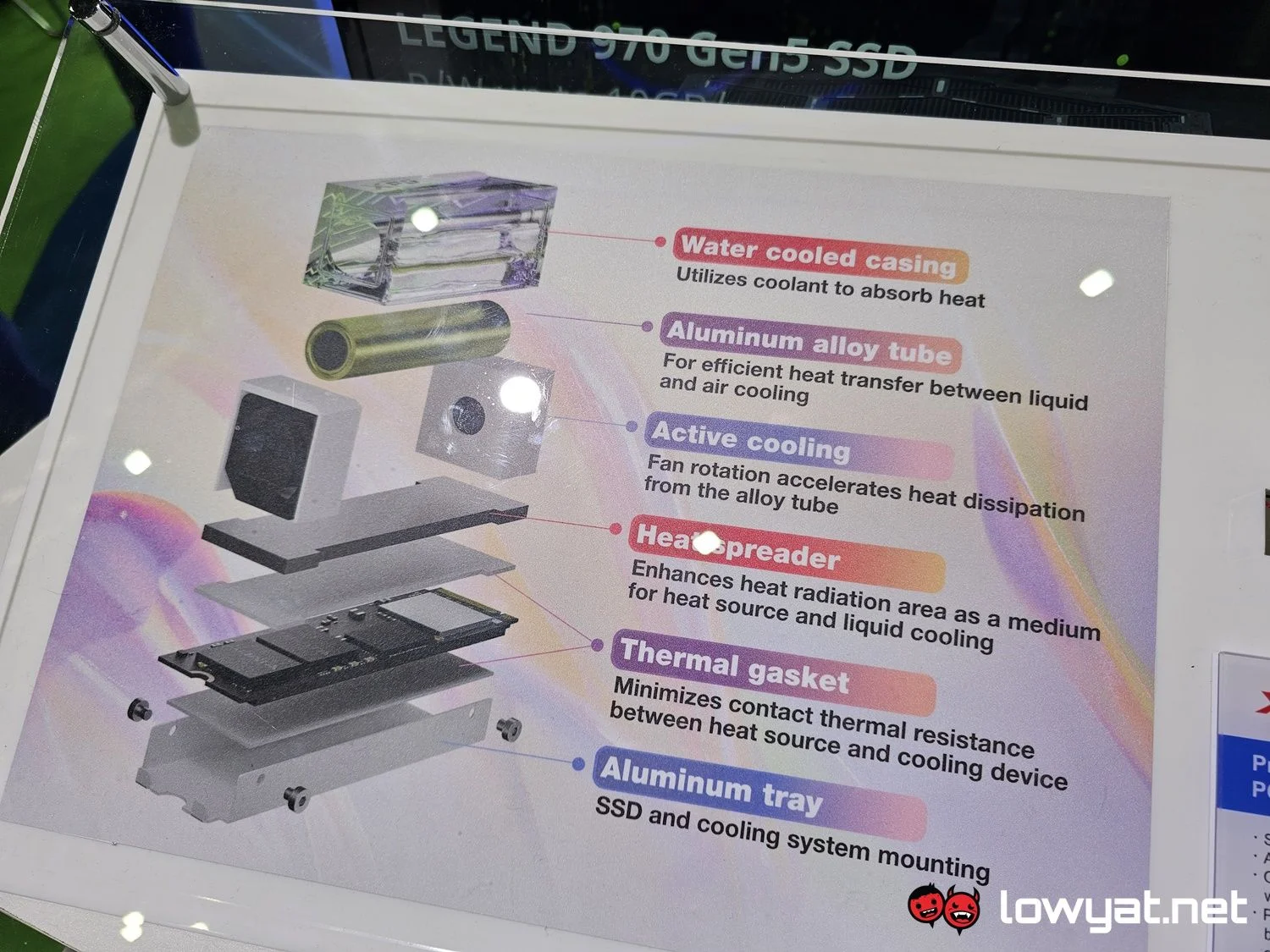At current, the Adata SSD is referred to as “Project NeonStorm”, we’re surmising that it is due to the fact that it is not finalised yet. It’s under its XPG gaming lineup and before you ask, yes, there is an RGB element integrated in the product, but that obviously isn’t the highlight of the product. That honour belongs to the massive block of water and metal that sits on top of the M.2 SSD.
Just to gloss over some of the technical specifications of Project NeonStorm, it’s PCIe Gen5, and with the cooler, Adata says that it is able to sustain average sequential read and write speeds of 14GB/s and 12GB/s, respectively. More to the point, that massive heatsink reportedly provides approximately 20% better heat dissipation, and that’s when it is compared to other Gen5 SSDs that are not water-cooled. Heat dissipation has long been an issue of every component in a PC and laptop, and even more so with next-generation components like PCIe Gen5 SSDs. Because of their eye-watering lightning-fast speeds – more than double that of the fastest PCIe Gen4 SSDs on today’s market – they are prone to generating more heat which in turn causes performance throttling. With Project NeonStorm, the water-cooling solution comprises a combination of liquid coolant encased within a clear casing, and a hollow aluminium alloy tube that is flanked by two mini fans that push-pulls air directly through it. All this then sits on top of the M.2 heatspreader that sits on top of the memory chips.
At the time of writing, Adata did not say to us when Project NeonStorm would be ready for the public.


